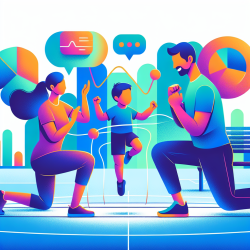Introduction
Social media has become a significant part of adolescents' lives, influencing various aspects of their behavior, including eating habits. The research article "Adolescent Peer Influence on Eating Behaviors via Social Media: Scoping Review" explores how social media platforms impact adolescents' dietary choices. As practitioners working with adolescents, understanding these influences can enhance our strategies to promote healthy eating behaviors.
Key Findings from the Research
The scoping review highlights several critical findings:
- Social media platforms like Instagram and Facebook significantly influence both healthy and unhealthy eating behaviors among adolescents.
- Visual appeal, content dissemination, socialized digital connections, and adolescent marketer influencers are central themes in how social media affects eating behaviors.
- Social media can serve as a channel for both positive reinforcement of healthy eating and negative influences, such as fast food advertising and pro-anorexia content.
Practical Applications for Practitioners
Practitioners can leverage these findings to enhance their interventions with adolescents:
- Promote Positive Content: Encourage adolescents to follow social media accounts that promote healthy eating and provide positive reinforcement for healthy dietary choices.
- Visual Engagement: Utilize visually appealing content in educational materials to capture the attention of adolescents, similar to how social media platforms use imagery to influence behavior.
- Peer Influence: Facilitate peer-led discussions and activities that promote healthy eating, leveraging the power of peer influence observed in social media environments.
Encouraging Further Research
While the current research provides valuable insights, there is a need for further studies to explore the real-world impact of social media on adolescent eating behaviors. Practitioners are encouraged to contribute to this growing field by conducting research that examines the effectiveness of social media-based interventions in promoting healthy eating among adolescents.
Conclusion
Social media is a powerful tool that can influence adolescent eating behaviors positively and negatively. By understanding these dynamics, practitioners can develop more effective strategies to promote healthy eating habits among adolescents. For those interested in exploring this topic further, the original research paper provides a comprehensive overview of the current findings.
To read the original research paper, please follow this link: Adolescent Peer Influence on Eating Behaviors via Social Media: Scoping Review.










